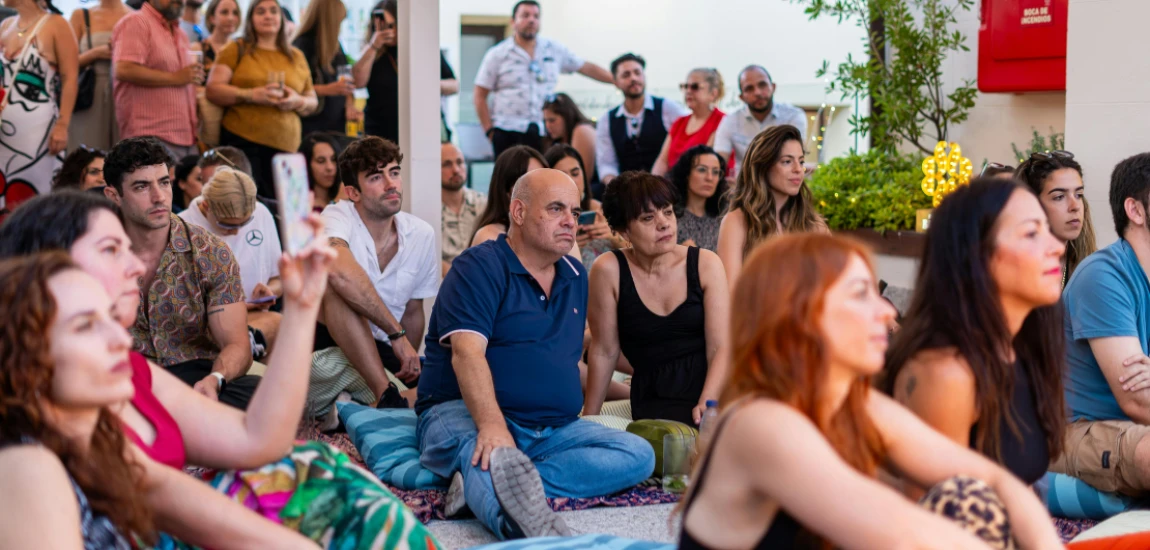Skip to the Good Part: The Rise of Micro-Attention Entertainment

In an era of endless streaming libraries, bottomless TikTok feeds, and AI-powered highlight reels, audiences are increasingly asking for one thing: the good part, and only the good part. This cultural shift has led to what many media analysts are calling micro-attention entertainment—bite-sized, condensed, and instantly gratifying snippets of content designed for minimal commitment and maximum dopamine.
The demand for short, engaging media isn’t just a Gen Z quirk—it’s becoming a dominant trend across demographics. Viewers no longer feel obligated to sit through a full two-hour movie or a 10-episode season when the highlights, recaps, or “best scenes” are just a click away. Streaming platforms now offer “skip intro” and “recap mode,” social platforms churn out 15-second edits of three-hour podcasts, and even music consumption has shifted toward snippets optimized for TikTok virality.
At its core, micro-attention entertainment reflects broader societal changes: information overload, multitasking lifestyles, and a collective impatience born from too many choices. With nearly every piece of media competing for time and focus, creators are pressured to deliver instant hooks rather than long builds. This shift raises big questions: Are we losing depth in exchange for efficiency? Or are we simply evolving toward a new, streamlined form of storytelling?
In this article, we’ll unpack how micro-attention entertainment is reshaping film, TV, music, and even literature. We’ll also look at what creators and consumers can do to thrive in this new landscape, where “skipping to the good part” isn’t just a meme—it’s the new rule of media engagement.
From Longform to Loops: The Evolution of Attention in Entertainment
The idea of condensed media isn’t new—trailers, music singles, and TV recaps have existed for decades. But the micro-attention revolution takes things further by prioritizing only the most instantly rewarding moments. Unlike traditional media formats that build anticipation, micro-attention entertainment assumes the audience won’t stick around long enough for payoff. Instead, the payoff comes first, then repeats, remixing itself into endless loops.
Platforms like TikTok, YouTube Shorts, and Instagram Reels have been instrumental in this evolution. They train audiences to expect fast, addictive content cycles—where the best joke, drop, or reveal is presented upfront. Consider how TV recaps have evolved: once a short segment before the next episode, they’re now standalone videos that condense entire seasons into minutes. Sports broadcasting follows the same trend: highlight reels routinely attract more viewers than full games. Even Twitch streamers find their largest audiences on TikTok clips, not live streams.
The transition reflects a fundamental recalibration of attention. In the past, longform storytelling was designed to earn commitment—think of prestige dramas that took episodes to build tension. Today, micro-attention entertainment assumes audiences may abandon content in seconds, so creators prioritize immediacy. That’s why we see movies released as TikTok “explainers,” podcasts broken down into 30-second hot takes, and even novels summarized into “BookTok” recaps.
This shift isn’t just consumer-driven. Algorithms reward content that maximizes engagement quickly, which means creators who deliver the best moments upfront rise faster. The result? A cycle where audiences demand shorter attention spans, and platforms engineer content to meet that demand. Longform storytelling hasn’t disappeared—but it now coexists in a world where loops, recaps, and highlight culture often dominate the conversation.

The Science of Skipping: Why We Crave Instant Payoff
Why are we so obsessed with skipping to the good part? The answer lies in how our brains respond to anticipation, reward, and time scarcity. Studies in cognitive psychology show that attention spans aren’t necessarily shrinking, but they are becoming more selective. In a media landscape overflowing with options, people unconsciously filter for content that promises immediate gratification.
Dopamine plays a huge role here. When a TikTok edit delivers a satisfying punchline within seconds, our brains release a reward signal that encourages us to keep scrolling. Compare that to a slow-burn drama or a long podcast—the reward is delayed, making it harder to compete with short-form alternatives. Algorithms exploit this neurological loop, ensuring the “skip to the good part” trend feels not only cultural but almost biological.
But the science goes beyond dopamine. Decision fatigue also drives micro-attention behavior. With so many platforms and choices, committing to a full show or album can feel overwhelming. Highlight reels and summaries reduce cognitive load, allowing audiences to feel informed or entertained without heavy investment. It’s the same psychology behind skimming articles instead of reading them fully—efficiency often trumps depth.
Interestingly, this craving for instant payoff is not universal. Research suggests that while younger audiences gravitate toward micro-attention content, older demographics still value longform narratives. However, even traditional consumers are adopting habits like skipping intros, fast-forwarding, or relying on highlight compilations. In short, the demand for condensed content reflects both neurological hardwiring and cultural conditioning.
This raises an important question: are we training our brains to become less tolerant of buildup, or are we simply optimizing entertainment for modern lifestyles? Either way, skipping is no longer a sign of impatience—it’s a feature of how we process media today.

Winners and Losers in the Age of Micro-Attention
Like any media shift, the rise of micro-attention entertainment creates both opportunities and challenges. On one hand, platforms and creators who embrace shorter formats can thrive. On the other, industries built on longform storytelling risk losing cultural dominance.
Winners:
Social platforms like TikTok and YouTube Shorts have become cultural powerhouses, dominating trends and reshaping music, fashion, and language.
Creators skilled at condensing content—comedians with snappy one-liners, editors who craft engaging highlight reels, or educators delivering “micro-lessons”—often see faster growth than traditional longform creators.
Audiences pressed for time benefit the most. Busy professionals, multitasking parents, or casual fans get entertainment without heavy investment.
Losers:
Film and TV studios that rely on extended storytelling face the challenge of competing with 60-second recaps. Even prestige dramas risk being reduced to “best moments” on social media.
Musicians and podcasters increasingly see their work consumed in fragments. A viral 15-second soundbite might make an artist famous, but it rarely translates into full-album or full-episode engagement.
Depth-driven creators—journalists, novelists, and documentarians—struggle to adapt their work to platforms that favor brevity.
However, the line between winners and losers is not fixed. Many longform creators are finding ways to leverage micro-attention platforms as marketing tools. For example, authors use TikTok summaries to drive book sales, and podcasters post viral clips that funnel audiences to full episodes. The real winners are those who treat micro-attention not as competition, but as a gateway into deeper storytelling.

How Creators Can Thrive in a Micro-Attention World
For creators, the micro-attention trend can feel daunting—but it also offers unprecedented opportunities. The key is not abandoning depth, but learning how to repurpose content for shorter attention spans while still building loyal audiences.
Hook Early: The first few seconds matter more than ever. Whether it’s a video, podcast, or article, lead with the most engaging or surprising element. Think of it as the “headline effect”—if you don’t grab attention instantly, the audience may scroll past.
Embrace Repurposing: Longform content still has value, but it needs a short-form gateway. A podcast can generate dozens of clips, a documentary can be summarized into TikToks, and an album can tease with viral snippets. Repurposing ensures content lives across formats.
Tell Stories in Layers: Micro-attention entertainment doesn’t have to replace depth. Creators can offer short, digestible pieces that lead into longer narratives. Think of it as an entry point—“snackable” content builds curiosity that drives audiences to the full meal.
Leverage Platforms, Not Just Audiences: Understanding how algorithms reward short, engaging content is essential. Timing, hashtags, and editing styles all play a role in visibility. Creators who optimize for platform trends while staying true to their voice stand out.
Experiment with Interactive Formats: Polls, comment-driven edits, and collaborative storytelling thrive in micro-attention spaces. Audiences want to feel part of the process, and short formats are perfect for fostering engagement loops.
Ultimately, thriving in this era means balancing brevity with substance. Micro-attention can attract audiences—but depth keeps them. Creators who master both will not only survive but shape the next wave of entertainment.




